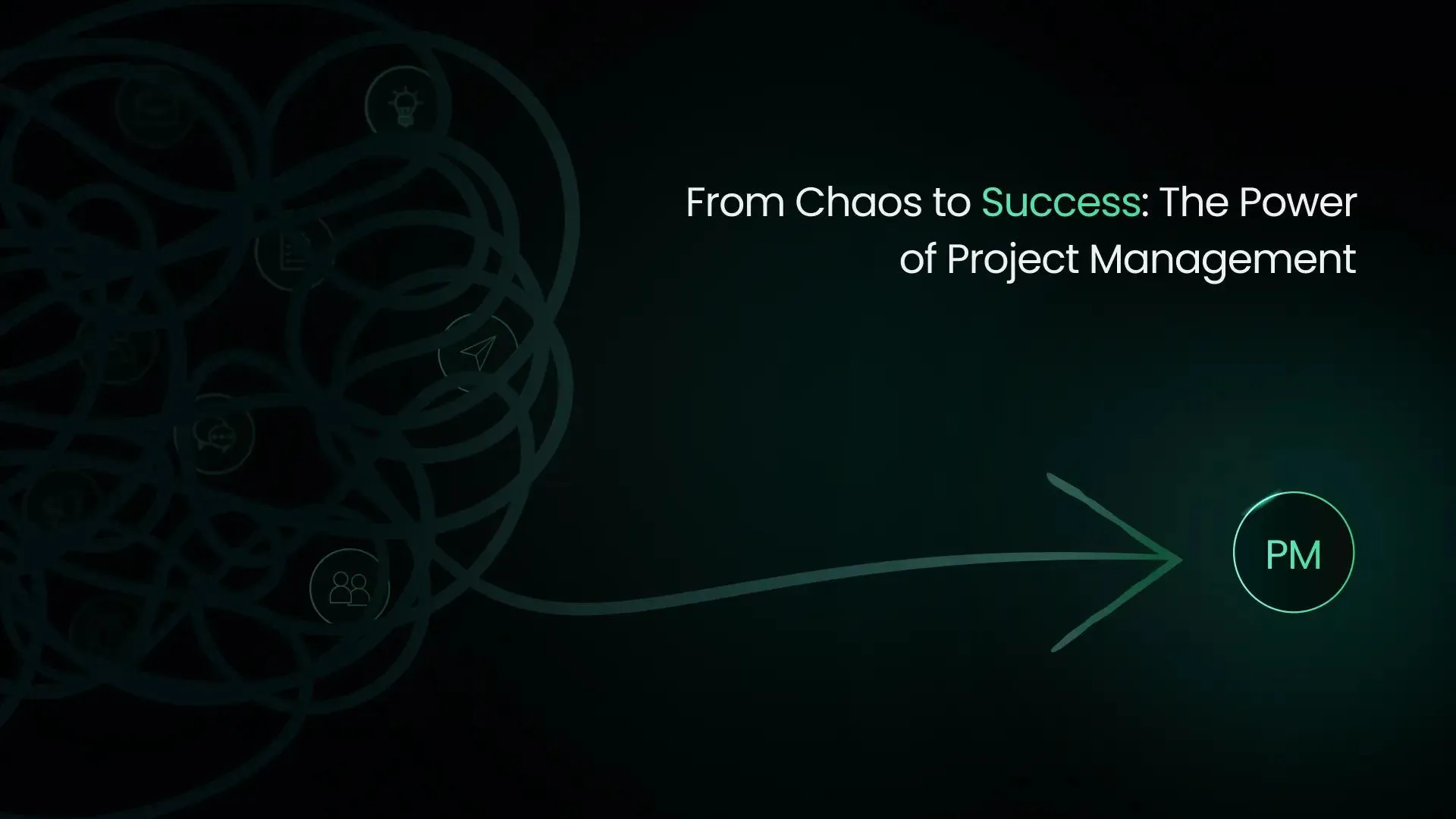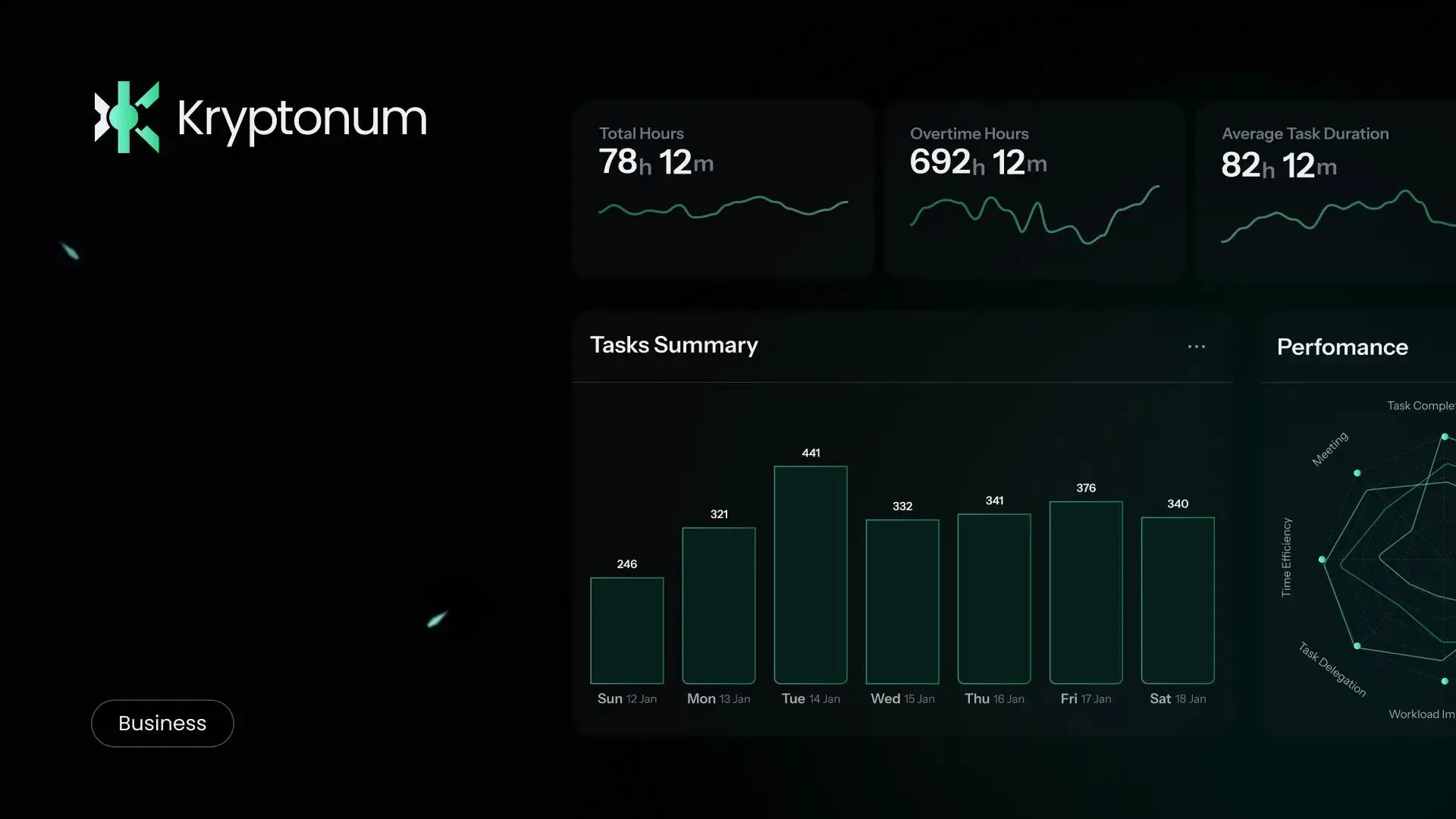Picture this: You're three weeks into what seemed like a straightforward website project. The client just mentioned they need 700 articles migrated from their old system. Your developer is stressed, the timeline is short. Nobody knows who's supposed to handle this curveball 😰
Your team is scrambling. The budget calculations are completely off. The launch date? Forget about it. And somehow, a simple website build suddenly becomes a data migration nightmare.
This scenario plays out in agencies worldwide every single day. One seemingly small request derails an entire project. Teams work overtime trying to fix problems that could have been prevented. Clients lose confidence. Relationships suffer 🙈
Sounds familiar? This is what happens when projects lack proper project management. Even the most talented development teams can find themselves drowning in chaos.
The worst part? It's completely avoidable…

❧ What Does a Project Manager Actually Do in IT Projects? Effective Project Managers and Their Responsibilities
Before diving into why you need a project manager, let's clarify what he or she actually does.
A PM is the central coordinator who ensures projects deliver on time, within scope, and on budget. They help to bridge the gap between technical teams and business stakeholders.
Core responsibilities include:
-

Project scope management
Defining project boundaries and controlling changes
-

Communication hub
Single point of contact between clients and development teams
-

Risk management
Identifying potential problems before they become crises
-

Quality management
Ensuring deliverables meet standards and expectations
-
Timeline coordination
Keeping all moving parts synchronized and on schedule
-
Resource optimization
Making sure the right people work on the right tasks
-
Good vibes
For some businesses it’s optional but at Kryptonum it’s essential. Enthusiasm makes projects ambitious, efficient and on-time.
The project manager doesn't write code or design interfaces. They create an environment where experts do their best work and stay aligned with goals 🎯 Effective project management is what transforms chaos into coordinated success!
❧ The Hidden Cost of Missing Project Management – Project Failure
IT projects without dedicated project managers fail at alarming rates. Studies show that 70% of all projects fail to deliver what was promised to customers 👎🏻 Without proper project management, its importance becomes painfully clear when things go wrong.
But the real costs go deeper than money…
Direct costs hit immediately:
- Budget overruns that eat into profit margins
- Timeline delays that push back other client work
- Resource waste as teams scramble to catch up
- Emergency fixes that cost 3x more than planned solutions
Hidden costs compound over time:
- Team burnout from constant crisis mode
- Client relationships damaged by poor communication
- Reputation hits when projects spiral publicly
- Lost opportunities while fixing preventable problems
When one project fails, it creates a domino effect. Your project team gets pulled into firefighting mode 👩🏻🚒 Other clients wait longer. Quality suffers across the board.
One in six IT projects becomes a “black swan” with a cost overrun of 200%, on average, and a schedule overrun of almost 70%. The cost of not having project management often far exceeds the investment. In fact, it can be several times higher. Organizations that apply project management consistently report better outcomes and fewer failures.

❧ How Project Managers Prevent Scope Creep Through Regular Updates? Project Plan
First line of defense against scope creep? Smart project managers use weekly updates. This isn't just status reporting—it's strategic boundary management throughout the project lifecycle. Effective project management requires structured communication that keeps every project on track 🛤️
The three-part update framework that effective project managers use:
-
Summary
What got done, what's on track, what's ahead
-
Planning
Next week's priorities and resource allocation
-
Problems + Solutions
Issues identified with proposed fixes
Here's where most agencies fail. They present problems without solutions. The client panics. Everyone scrambles for answers under pressure.
Real example? One agency presented database performance issues during their weekly meeting. With zero proposed solutions. As a result, the client spent the entire week worried. The project team had to work overtime. The issue should have been addressed proactively the previous week 🤦🏻♂️
Better approach? When that 700-article migration surfaces, a good project manager immediately offers options:"This wasn't in our original project scope, but here are two ways we can handle it:
- Option A: We provide a tutorial, and your team handles migration during our build
- Option B: We add migration as a separate project phase."
The client gets solutions, not stress. The project stays on track.
A skilled project manager might say: "We can record step-by-step tutorials. Your team can start working on the migration during our development phase. This keeps us on budget and timeline."
Setting update expectations matters throughout the project. Weekly works for most projects. Complex builds might need twice-weekly check-ins. Simple maintenance projects can go bi-weekly.
Match the rhythm to project complexity and client comfort level. Management plan approach helps ensure the project is completed successfully and within scope 💪🏻
❧ Project Management Requires The Communication Framework That Keeps Projects on Track
Not every client communicates the same way 🗣️ Great project managers adapt their style to match client preferences. Project management really can help organizations maintain strong relationships while ensuring project success.
Client communication types:
-

Phone people
Want to talk through problems, prefer quick calls over emails
-

Email detailed
Need written summaries and documentation trails
-

Meeting-dependent
Only feel confident with regular face-to-face check-ins (weekly GMeets work best)
-

Async-friendly
Happy with project management software and daily task delegation
-

Ghost clients
Only need email summaries and a meeting if necessary, but the less, the better
The key is showing communication possibilities upfront and matching each client's preferred style. Some clients want deep engagement in every decision. Others just need dates, progress updates, and next steps. Internal communication protocols prevent fires 🔥
Daily stand-ups catch minor issues before they become big problems. If brand colors fail accessibility, you want to know right away. Not during final review.
Regular internal check-ins also keep team management strong and motivation high. Everyone knows their role, sees progress, and feels connected to the bigger picture.
Early fire detection saves resources. Catching problems in the beginning when they're not time-consuming prevents project disruptions later. This approach helps project managers keep projects moving forward smoothly 💨
The golden rule: Fewer people in meetings means faster decisions. Your project manager handles most client communication. Bring in specialists only when their expertise is essential.
For example, never do architecture reviews without your lead developer. But routine status updates? The project manager handles those solo.
❧ Why One Point of Contact Changes Everything: Best Practices for Project

Multiple people managing client communication creates chaos. Messages get lost. Decisions conflict. Nobody owns the outcome.
How does this work in practice?
The project manager knows the full project context. They understand the business, target audience, team resources, and client constraints. When clients ask technical questions, the PM answers or brings in the right expert 👏🏻
A dedicated project manager serves as the central hub. They coordinate everything but don't bottleneck communication. Team members still communicate directly with clients when needed. Yet, the project manager ensures nothing falls through cracks. He or she maintains project integrity throughout the project lifecycle.
Client confidence builds when they know who to call. No more "let me check with the team" responses. No more waiting for answers because everyone thought someone else was handling it…
One accountable contact person eliminates confusion and builds trust ✨
❧ Fast Decision-Making: The Project Manager Advantage
IT projects live or die by decision speed. Markets move fast. Clients need change. Technology evolves.
Project management methodologies allow to speed up decisions by removing friction between stakeholders. This is why project management is vital for maintaining a competitive advantage.
Decision frameworks for common scenarios:
-

Technical choices
Project manager gathers requirements, presents options, gets quick approval
-

Design direction
He facilitates client feedback loops without endless revisions
-

Scope changes
PM provides impact analysis and cost implications immediately
-
Timeline adjustments
Project manager shows trade-offs and gets prioritization decisions
When decisions get stuck, good project managers have escalation paths ready. They know who has final authority and how to reach them quickly. This project management process ensures that project activities don't stall waiting for approvals.
This speed advantage compounds. Faster decisions mean faster delivery 🚚 Faster delivery means happier clients and more efficient resource use. Project managers make sure that the entire project benefits from streamlined decision-making.
Time-to-market benefits are enormous in competitive industries. Being first often matters more than being perfect. Organizations that understand the value of project management see these advantages consistently.
❧ Building the Bigger Picture: Project Context and Stakeholder Alignment
Great project managers start every project with comprehensive context-setting. This prevents misunderstandings that derail projects later. Good project management requires thorough planning from the project lifecycle's beginning.
Essential context areas:
-
Stakeholder mapping
Who makes decisions, who influences them, who implements
-
Resource landscape
Client team capabilities, external dependencies, budget constraints
-
Project timeline
Must-have dates vs. nice-to-have milestones
-

Team introductions
Key stakeholders, services, advantages, business context
-

Other teams and dependencies
Understanding the complete ecosystem
Team introductions matter more than you think. When developers understand the client's business pressures 💼, they make better technical decisions. When designers know the target audience deeply, they create more effective solutions.
This shared understanding prevents late-stage conflicts. Everyone works toward the same vision because they know what success looks like 🤩 Project managers ensure that project deliverables align with business goals.
Early alignment saves weeks of rework later. It helps to ensure the project is successful. This foundation is what separates successful project outcomes from project failure.
❧ The Art of Assertive Project Management – Great Project Ahead
Balancing client satisfaction with project boundaries requires skill. You want to deliver excellence without destroying profitability.
Competent project managers know when to go the extra mile and when to hold firm.
👉🏻 Go the extra mile when:
- Minor improvements create big client wins
- Project team has capacity and enthusiasm
- Investment strengthens long-term relationship
- Change aligns with project goals
👉🏻 Hold boundaries when:
- Scope creep threatens other client projects
- Changes require significant resource reallocation
- Client expectations become unrealistic
- Team quality or wellbeing is at risk
Annexes and change requests aren't weapons—they're tools 🛠️ Use them to maintain transparency about project scope and costs. Having ready annex templates helps. Ideally, balance that with creating projects you're genuinely proud of.

Sometimes going the extra mile matters. A few more hours that lead to client satisfaction and team pride often pay dividends in the long-term.
The goal isn't to nickel-and-dime clients. It's to ensure sustainable relationships where great work can continue 🤝🏻
Pride in project deliverables drives quality. However, sustainable profitability enables that quality to continue.
❧ Choosing the Right Project Manager for Your Agency Partnership
When evaluating development partners, project management capability should be your top priority 🔝 The benefits of project management show when teams can run a project from start to finish.
Essential project management skills for IT projects:
- Technical fluency to understand development challenges
- Client communication skills that build confidence
- Problem-solving mindset with solution-oriented approach
- Scope management experience with change control processes
- Team coordination abilities that keep everyone aligned
Questions to ask potential partners:
- How do you handle scope changes mid-project?
- What's your standard communication rhythm with clients?
- Can you show examples of how you've solved project challenges?
- How do you ensure nothing falls through the cracks?
- What happens when projects hit unexpected problems?
Red flags 🚩in project management approaches:
- No defined communication processes
- Reactive rather than proactive problem-solving
- Multiple people managing client communication without coordination
- No scope change procedures
- Team members who haven't worked together before
Great project managers enhance agency relationships by making your work look effortless. They handle complexity behind the scenes. This way, you can focus on strategy and creative excellence 🏅
Working with experienced project management professionals delivers measurable results. The investment pays for itself through smoother delivery, happier clients, and sustainable growth.
❧ Looking for a Partner with Development Pros Who Gets Project Management Right?
Looking for a development partner that actually understands project management? You've found the right place 🤝🏻
Effective project management can help transform challenging builds into successful project outcomes. Our project managers prevent problems, speed up decisions, and keep your clients confident.
When you partner with us, you get:
- Dedicated project managers who understand both technology and client needs
- Proactive problem-solving that keeps projects on track
- Single point of contact that eliminates confusion
- Team expertise that makes your agency look great
- Project management expertise that ensures every project meets its objectives

